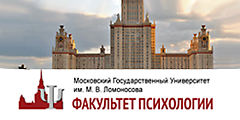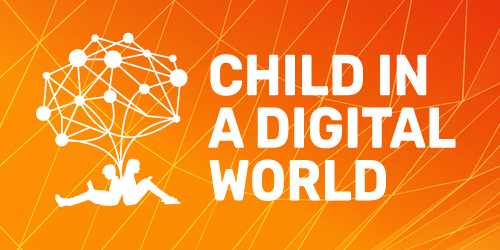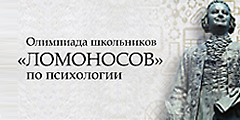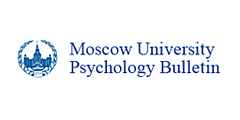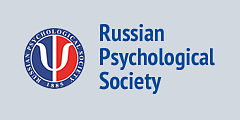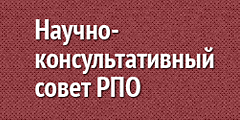
Psychological Institute of Russian Academy of Education,
Moscow, Russia
-
Coping Responses during the COVID-19 Pandemic: A Cross-Cultural Comparison of Russia, Kyrgyzstan, and PeruVoronin, I.A.; Manrique-Millones, D.; Vasin, G.D.; Millones-Rivalles, R.B.; Fernández-Ríos, N.; Marakshina, Yu.A.; Lobaskova, M.M.; Symanyuk, E.E.; Pecherkina, A.A.; Ageeva, I.A.; Lysenkova, I.A.; Ismatullina, V.I.; Sitnikova, M.A.; Malykh, S. B.; Manrique-Pino, O.PDF HTML8479“ CITE
Voronin, I.A., Manrique-Millones, D., Vasin, G.M., Millones-Rivalles, R.B., Manrique-Pino, O., Fernández-Ríos, N., Marakshina, Yu.A., Lobaskova, M.M., Symanyuk, E.E., Pecherkina, A.A., Ageeva, I.A., Lysenkova, I.A., Ismatullina, V.I., Sitnikova, M.A., Malykh, S.B. (2020). Coping Responses during the COVID-19 Pandemic: A Cross-Cultural Comparison of Russia, Kyrgyzstan, and Peru. Psychology in Russia: State of the Art, 13(4), 55-74.
copied
-
Background. The COVID-19 pandemic has subjected people around the world to severe stress, evoking a variety of coping responses. Coping responses can be broadly classified into four strategies: 1) problem-focused coping; 2) emotion-focused coping; 3) socially supported coping; and 4) avoidance. While there is a wide variability of individual coping responses, to some extent they are also culturally specific.
Objective. This study aimed to compare the differences in the prevalence and factor structure of coping responses during COVID-19 pandemic in three countries: Russia, Kyrgyzstan, and Peru.
Design. The sample included 501 participants from Russia, 456 participants from Kyrgyzstan, and 354 participants from Peru. The mean age of participants was 28 years in Russia (SD = 13.5); 24 years in Kyrgyzstan (SD = 10.0); and 30 years in Peru (SD = 12.3). In Russia and Kyrgyzstan, coping strategies were assessed with an abbreviated Russian adaptation of the COPE (Coping Orientations to Problems Experienced) questionnaire. In Peru, coping responses were assessed using the Spanish version of the Brief COPE questionnaire. The average scores from fifteen COPE scales were used as the input data for linear modelling and factor analysis.
Results. The coping scores varied substantially within each country. Differences between countries accounted for 17.7% of the total variability in religious coping; 15.8% in acceptance; 13.9% in mental disengagement; and less than 7% in the other coping strategies. No difference in the prevalence of coping responses was found between Russian and Kyrgyz participants after accounting for age and gender. In all three countries the coping responses were associated with the same four coping domains: problem-focused coping, socially supported coping, avoidance, and emotion-focused coping. Four factors explained up to 44% of the total variation in the COPE scores. Religious coping and mental disengagement were classified into different coping domains in the three countries.
Conclusion. The results suggest that during the COVID-19 pandemic, people from different countries apply the full range of coping responses within the four universal coping strategies. Religious coping and mental disengagement differed the most across the countries, suggesting that some coping behaviors can take on different roles within the system of coping responses to stressful events. We attribute these differences to differing cultural and socioeconomic characteristics, and the different measures taken by governments in response to COVID-19.
DOI: 10.11621/pir.2020.0404
Keywords: coping behavior; coping strategies; COPE; cross-cultural differences; factor structure
-
-
Cognitive and Non-Cognitive Predictors of the Unified State Exam Performance of Students from Schools with Regular and Advanced Mathematical CurriculaPDF HTML7972“ CITE
Voronin I. A., Ovcharova O. N., Bezrukova E. M, Kovas Yu. (2018). Cognitive and Non-Cognitive Predictors of the Unified State Exam Performance of Students from Schools with Regular and Advanced Mathematical Curricula. Psychology in Russia: State of the Art, 11 (4), 177-199.
copied
-
Background. Exams such as the SAT, ACT, and GCSE are used to give an account of educational outcomes and provide a unified criterion for university admission. The Unified State Exam (USE) aims to fulfill these functions in Russia. All Russian students take two compulsory USE exams, mathematics and Russian, at the end of their school education.
Objective. Variability in the mathematics and Russian USE scores is vast, both across and within schools. Our study investigated potential sources of this variability.
Design. The sample included 196 students from regular schools (non-selected students) and 306 students from schools with advanced mathematical curriculum (selected students). The mathematical ability (numerical representation, mathematical fluency), intelligence, basic cognitive functions (working memory, reaction time), and mathematical self-efficacy of the students were assessed. We applied structural equation modeling to estimate the proportion of variability in the mathematics and Russian USE scores explained by cognitive predictors and mathematical self-efficacy.
Results. In the whole sample, cognitive predictors and mathematical self-efficacy explained 54% of the variation in the mathematics USE scores and 30% of the variation in the Russian USE scores. These effects diminished after the data were analyzed in two groups separately, suggesting that the associations between predictors and exam scores were to a large extent accounted for by group differences (students from regular and specialized schools).
Conclusion. The students from the schools with an advanced mathematical curriculum exhibited better cognitive performance, appraised their mathematical abilities higher, and achieved higher mathematics and Russian USE scores, compared to the students from regular schools. Within the groups, cognitive and non-cognitive predictors explained a small part of the variation of the mathematics and Russian USE scores.
DOI: 10.11621/pir.2018.0412
Keywords: academic achievement, Unified State Exam, mathematical ability, intelligence, number sense
-



